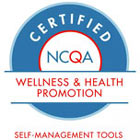Pain management and burn care
Most children with burns have pain. The amount of pain depends on the severity and location of the burn. Severe pain can make your child's stay in the hospital very scary. Your child will be given pain medicine through an I.V. (intravenous) line or by mouth before wound care and as needed. Many parents worry that their child may become addicted to pain medicine. This is very rare because children are given such small amounts of pain medicine for short periods. There are also pain medicines that work well without being addictive. Ask your child's health care provider if you have questions or concerns about pain medicine.
If your child is old enough, they can use a pain rating tool to help control the pain. This tool tells the health care team how much pain your child has at any given time. It will also help them figure out if your child needs pain medicine so that your child can be more comfortable. The nurse and child-life therapist can help your child control the pain. They can also help you find ways to comfort and distract your child to decrease their anxiety.
Itching and burn care
Most children who have had a burn injury often have itching at some point during the healing process. Itching may happen in the area of the burn, a skin graft, or the area the graft was taken from. Sometimes it starts right away, but it may happen several weeks or months into the healing process. Itching is more likely to happen in younger children and those with dry skin or thicker scars. Itching can range from a minor irritation to severe discomfort that can interfere with daily activities. While there is no cure for itching, it decreases over time. There are things you can do for your child to ease their discomfort:
-
Skin creams help keep the area moist. But stay away from skin creams or lotions that contain alcohol, lanolin, or perfumes, which can make the itching worse.
-
Topical corticosteroids (such as hydrocortisone) that you apply to the skin may be recommended by your child's health care provider.
-
Cool or cold compresses may help provide relief. If you use frozen or chilled material for the cold compress, be sure to wrap it in a towel or cloth covering. Never put ice directly on the skin.
-
There are medicines that your child's provider may prescribe. These include antihistamines and oral steroids to help with itching.
Treatment will depend on your child’s symptoms, age, and general health. It will also depend on how severe the condition is. Don't use home remedies. Some of these can damage your child's skin. If you don't know what treatment to use or how to apply compresses, always ask your health care provider or pharmacist.

